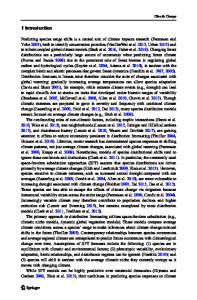One-Way ANOVA: Comparing Means of More than Two Samples
One-way analysis of variance is a statistical technique used for comparing means of more than two groups. It tests the null hypothesis that samples in different groups have been drawn from the same population. It is abbreviated as one-way ANOVA. This tech
- PDF / 1,147,796 Bytes
- 34 Pages / 439.37 x 666.142 pts Page_size
- 14 Downloads / 502 Views
One-Way ANOVA: Comparing Means of More than Two Samples
Learning Objectives After completing this chapter, you should be able to do the following: • • • • • • • • • • • •
Understand the basics of one-way analysis of variance (ANOVA). Learn to interpret the model involved in one-way analysis of variance. Learn the different designs of ANOVA. Describe the situations in which one-way analysis of variance should be used. Learn the manual procedure of applying one-way ANOVA in testing of hypothesis. Construct the null and research hypotheses to be tested in the research study. Learn what happens if multiple t-tests are used instead of one-way ANOVA. Understand the steps involved in one-way analysis of variance in equal and unequal sample sizes. Interpret the significance of F-statistic using the concept of p value. Know the procedure of making data file for analysis in SPSS. Understand the steps involved in using SPSS for solving the problems of oneway analysis of variance. Describe the output of one-way analysis of variance obtained in SPSS.
Introduction One-way analysis of variance is a statistical technique used for comparing means of more than two groups. It tests the null hypothesis that samples in different groups have been drawn from the same population. It is abbreviated as one-way ANOVA. This technique can be used in a situation where the data is measured either on interval or ratio scale. In one-way ANOVA, group means are compared by comparing the variability between groups with that of variability within the groups. This is done by computing an F-statistic. The F-value is computed by dividing the mean sum of squares between the groups by the mean sum of squares within the groups. J.P. Verma, Data Analysis in Management with SPSS Software, DOI 10.1007/978-81-322-0786-3_7, # Springer India 2013
221
222
7
One-Way ANOVA: Comparing Means of More than Two Samples
As per the central limit theorem, if the groups are drawn from the same population, the variance between the group means should be lower than the variance within the groups. Thus, a higher ratio (F-value) indicates that the samples have been drawn from different populations. There are varieties of situations in which one-way analysis of variance can be used to compare the means of more than two groups. Consider a study in which it is required to compare the responses of the students belonging to north, south, west and east regions towards liking of mess food in the university. If the quality of mess food is rated on a scale of 1–10 (1 ¼ “I hate the food,” 10 ¼ “Best food ever”), then the responses of the students belonging to different regions can be obtained in the form of the interval scores. Here the independent variable would be the student’s region having four different levels namely north, south, east and west whereas the response of the students shall be the dependent variable. To achieve the objective of the study the null hypothesis of no difference among the mean responses of the four groups may be tested against the alternative hypothes
Data Loading...











